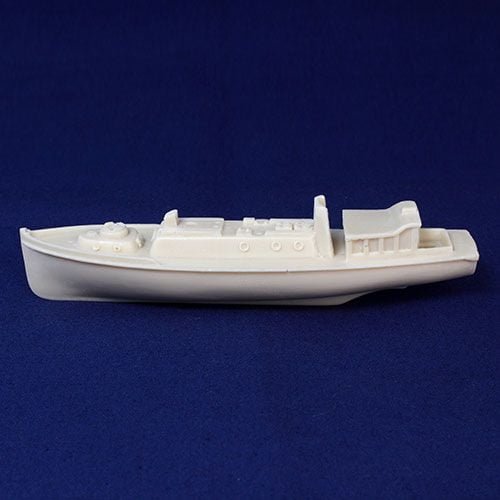Safety First
When working with resin models please remember that cast resin and 3D printed resin parts can produce fine dust, so please take extra care and use a mask and well ventilated area.
Preparation
The first thing to do is to wash the parts in warm soapy water using an old toothbrush to get into all the crevices. When resin is cast, release agents are used and these will affect the adhesion of fillers, glues and paints so start by cleaning them off.
Flash can be removed with a sharp hobby knife, file or saw depending on the quantity to be removed. Bear in mind that a saw or file WILL leave tooth marks in the relatively soft resin and you’ll need to sand these out. This is not at all difficult to do provided you’ve not cut or filed away too much material in the first place.
Sanding is done with progressively finer papers until you finish with 400-600 grit paper however you will probably want to do some filling.
At this stage the filling is best done with epoxy putty. Most resin kits will contain a couple of air bubbles that need filling and sanding and a poorer quality one may have dozens. Don’t be afraid to make the holes larger if this makes it easy to get a descent amount of filler into them.
Another thing to check at this stage is that all the parts are the correct shape. Resin parts are cast in flexible rubber moulds and while this has the advantage that if allows the casting of parts with considerable undercuts, the down side is that the mould can ‘give’ under the weight of the resin. By checking for this you allow yourself the opportunity of sanding down any surfaces that have bulged, filling any that are hollowed and even cutting, repositioning, filling and sanding to correct shapes.
Assembly
Resin parts can be joined with super glue although a 2 part epoxy will probably be better because chances are that the parts won’t match up particularly well. Start by dry fitting the parts together to see what’s needed.
After the joint is made and the glue has hardened scrape away any glue that has oozed out before filling any gaps. At this stage, super glue can be used to fill small gaps with epoxy for any larger ones. A final round of sanding should prepare you for painting.
Painting
Painting resin parts is a fairly standard procedure. Another wash is probably in order and you can use enamels or acrylics directly on the resin, or preferably, because of the usual benefits, on top of a coat of primer.
As always, if you have any questions about our tips please feel free to email them to me and I will be pleased to assist you.




